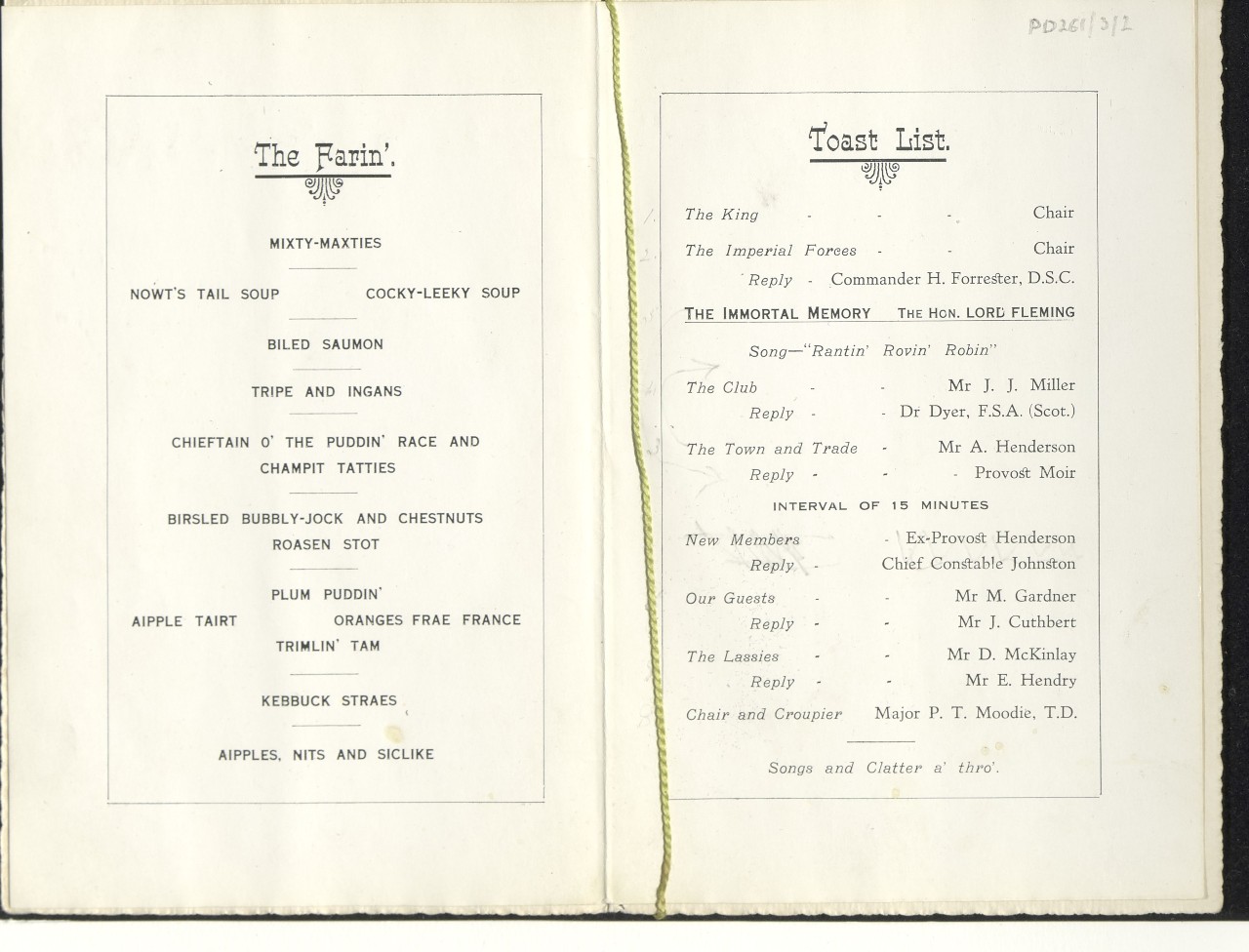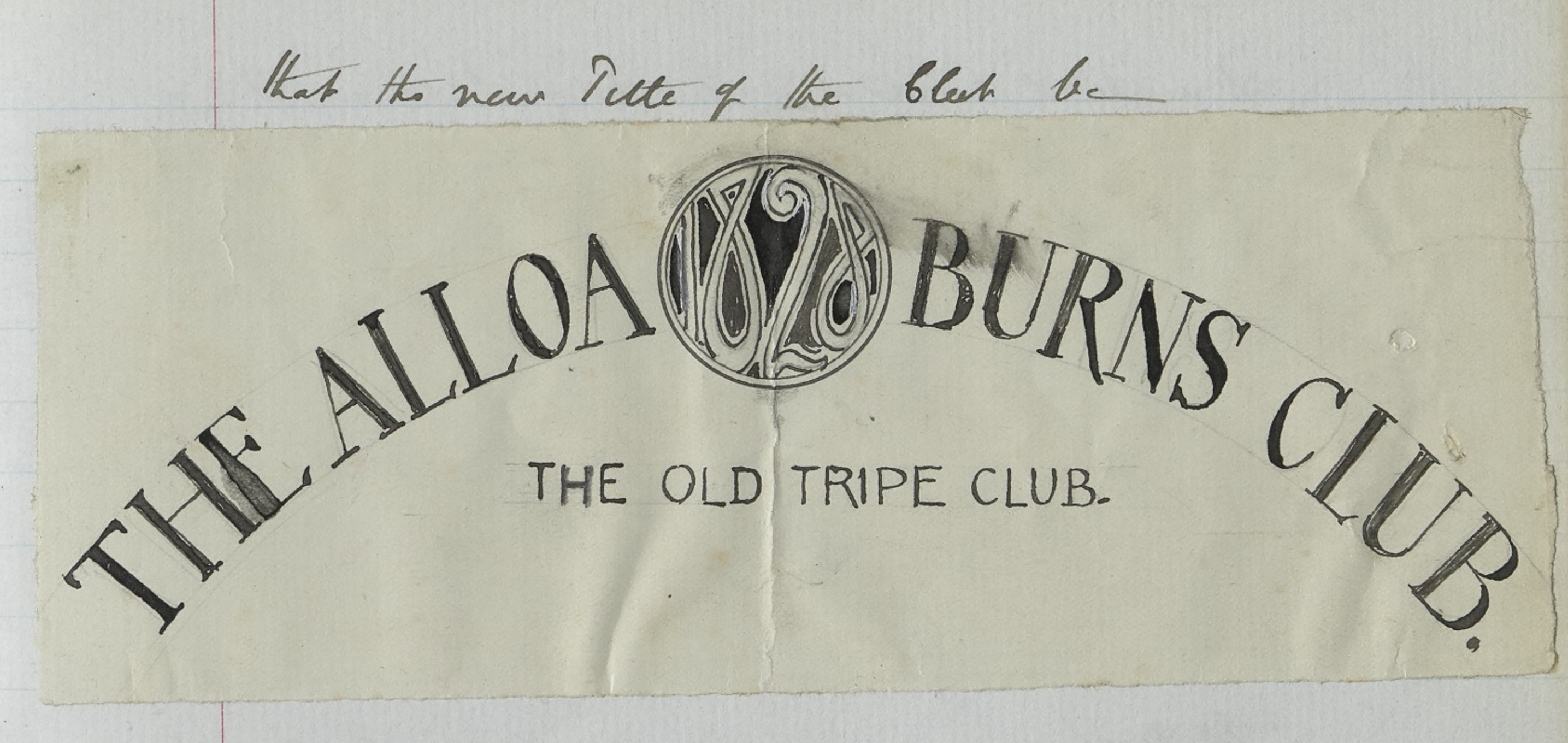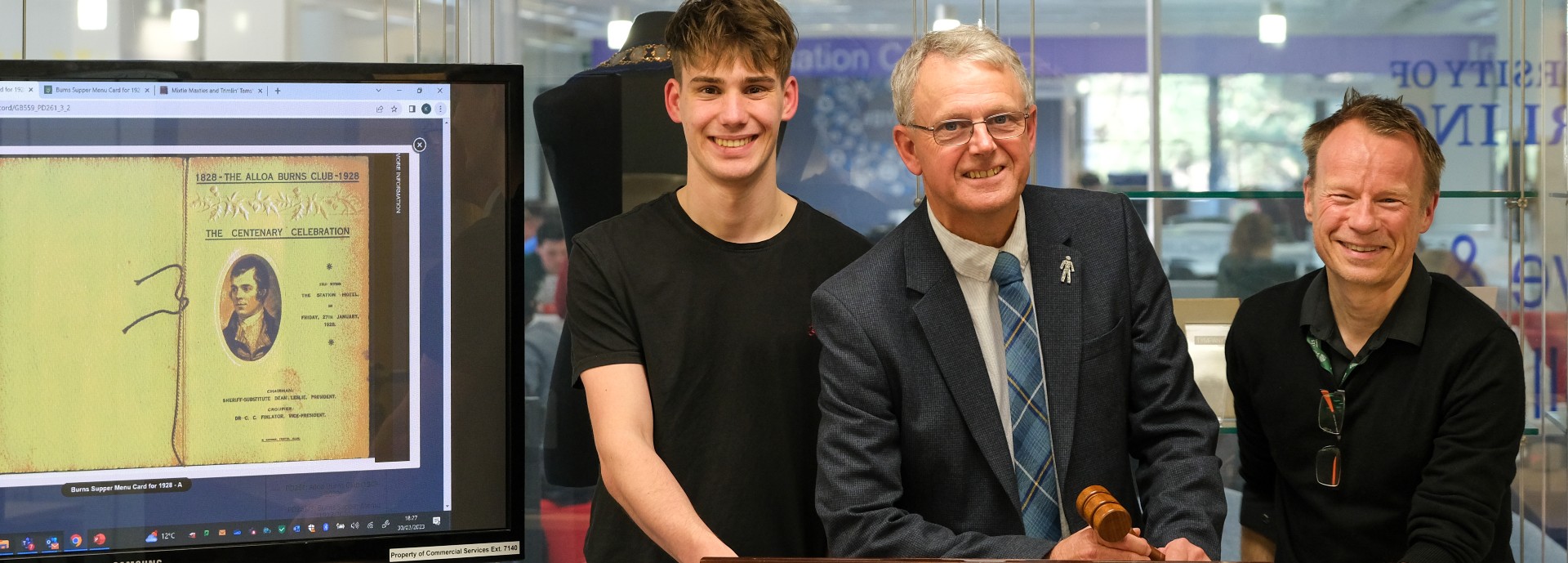Mixty-maxties and trimlin’ tams: Burns supper menus revealed by University digitisation
Back to news
Digitisation of a Burns Club’s historical archives has uncovered menus going back almost a century which reveal how the traditional supper held to celebrate Scotland’s national poet has changed.
The documents also detail how the group, based in Alloa, evolved from a local “Tripe Club”, established in 1827, into an organisation devoted to recognising the work of Robert Burns in 1912.
The earliest menu, from Alloa Burns Club’s 1927 supper, includes mixty-maxties (hors d'oeuvres) nowt’s tail (oxtail) soup; birsled bubbly-jock (turkey); kebbuck straes (cheese straws); and trimlin’ tam (a wobbly, trembling table jelly), none of which are now served at today’s traditional suppers.
However, one thing that does consistently appears on every menu over the years is haggis, or “Chieftain O’ the Puddin’ Race,” as Burns described it in his famous Address To A Haggis.

The archives of the club date back to 1849 and provide a detailed record of both the annual suppers and its wider cultural and charitable activities.
As well as menus, the archives include minutes of meetings and membership details which trace how the club developed from the Tripe Club which was “composed of a few congenial companions” whose suppers were “spent in joyous harmony with songs, recitations and stories” to a club which specifically celebrated and promoted the life and poetry of Robert Burns.
Originally established in 1828 as the Alloa Tripe Club, the Alloa Burns Club holds its annual Burns Supper on, or close to, Burns Night (25th January).

Burns, who lived from 1759 to 1796, is a cultural icon who is widely considered to be one of Scotland’s greatest poets and lyricists.
The digitisation was carried out by University of Stirling student Kolja Sirok, who is enrolled on the University’s Putting Arts and Humanities to Work module.
Kolja said: “As a foreigner, I found the project very interesting, because up to this point I did not have any awareness of the Scottish culture of the mid to late 19th century outside the big two urban centres of Edinburgh and Glasgow. Reading the documents can provide great insight into Alloa’s cultural life in the second part of the 19th and 20th centuries.”
University resource open to local heritage groups
The University’s archivist Karl Magee said: “In 2021 we upgraded our digitisation equipment to the Zeutschel ScanStudio and we now offer a digitisation hub for heritage organisations and the creative community in the wider Forth Valley area.
“This collaborative project with the Alloa Burns Club and Clackmannanshire Council Archives highlights the potential of the ScanStudio to support the opening up of heritage across the Forth Valley Region.”
Duncan Sloan, Secretary of Alloa Burns Club, said: “We are delighted to see the completion of this project which will allow access to the records, activities and rich history of the Alloa Burns Club. It will also ensure the safe keeping of these valuable and unique documents for the future.”
Following digitisation, the physical documents were transferred to Clackmannanshire Council Archives for permanent storage.
The digitised content is available on the University’s Culture on Campus website.

